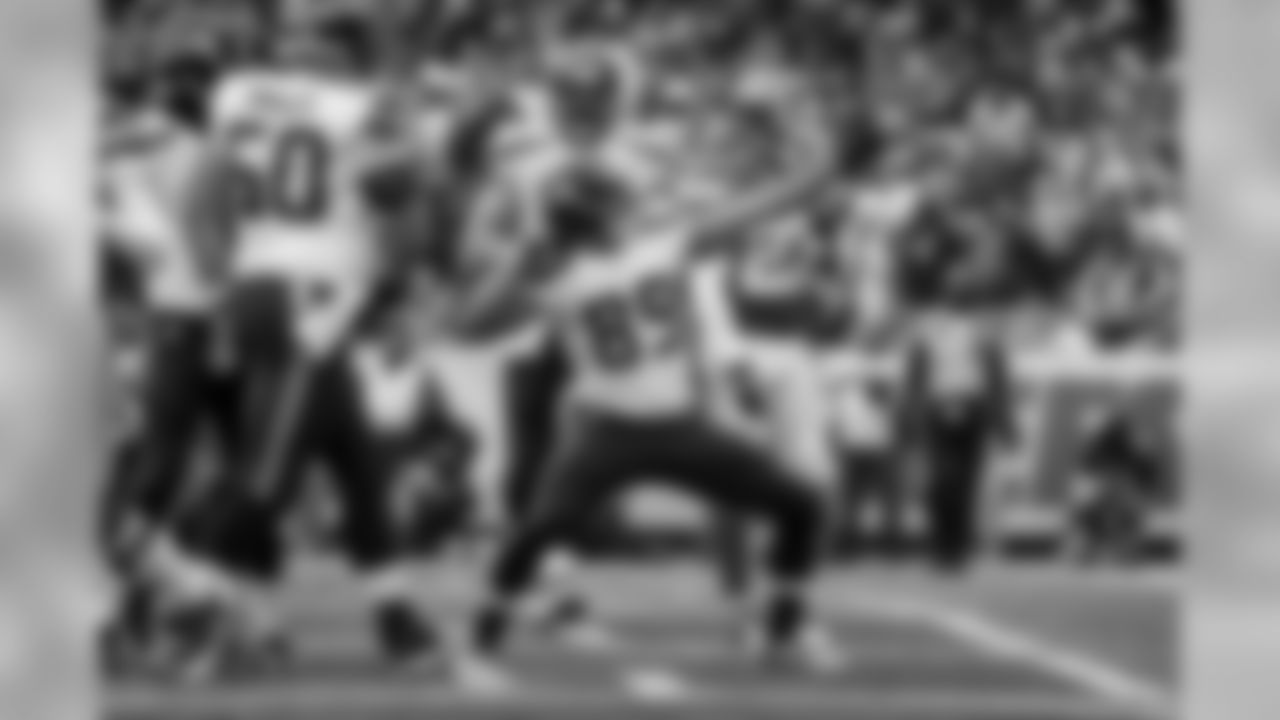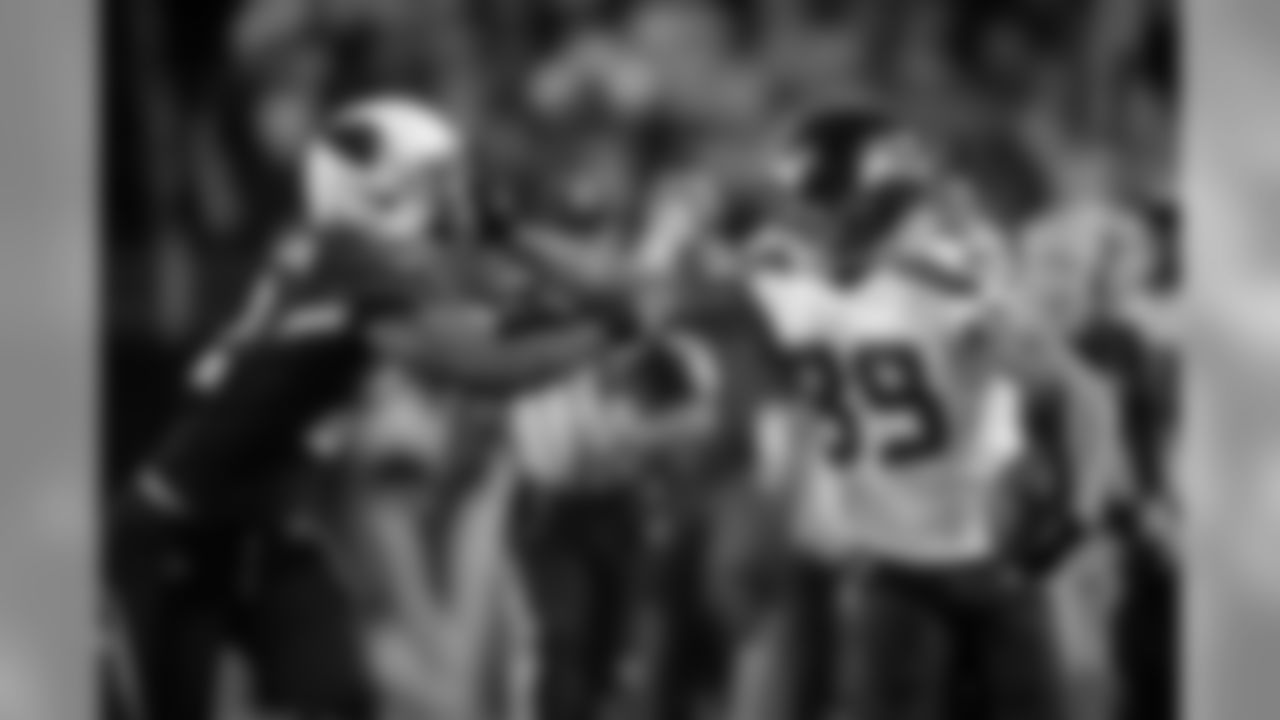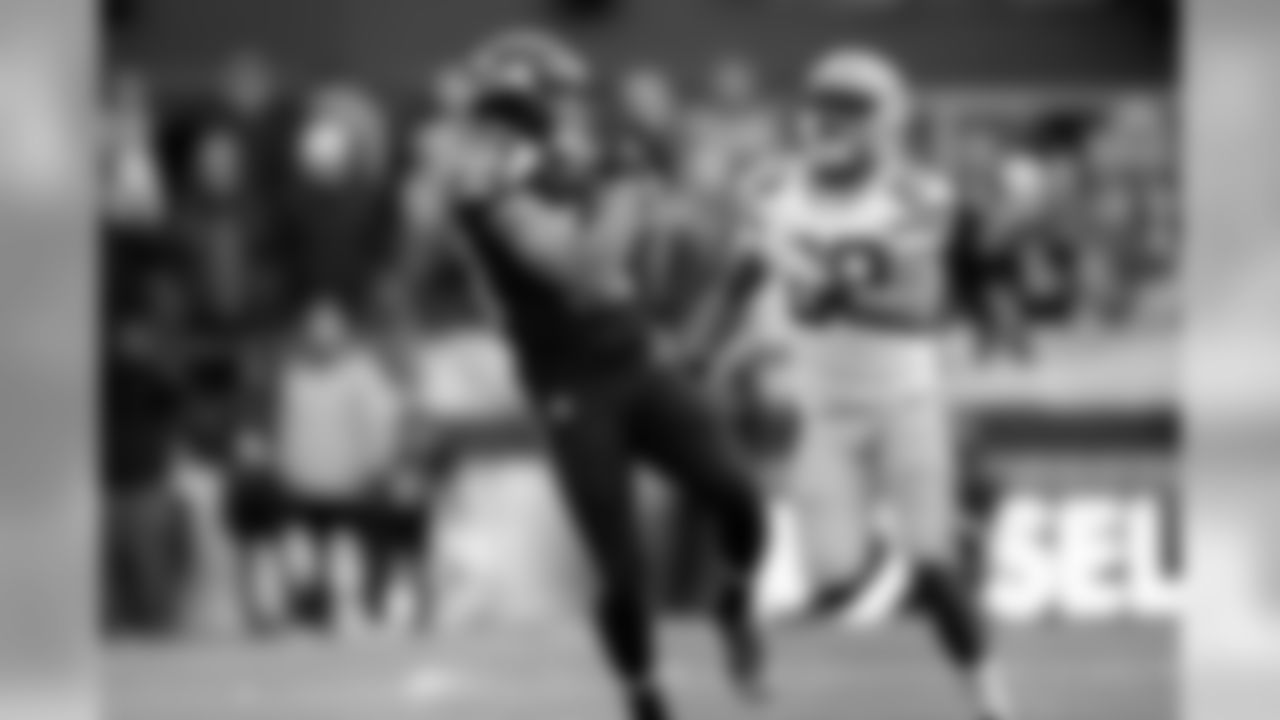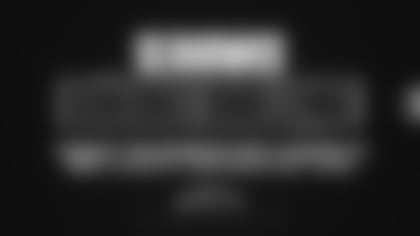Photos courtesy Geekwire/Kevin Lisota
When Seahawks players walk off of the field following a practice, the first thing they do isn't rehydrate or hit the showers, but rather plug in. Or, more accurately, the device they've been wearing throughout practice is plugged in so that things like heart rate, distance covered and more can be downloaded and used to measure the athlete's workload for the day.
This is sports in a 21st century, a mixture of old-fashioned hard work and athleticism supplemented by technology and data that never could have been dreamed up decades, and in some cases, even years ago. And this helps explain why Seahawks receiver Doug Baldwin was sitting on a stage at Safeco Field Wednesday alongside former U.S. Olympic swimmer Ariana Kukors at the GeekWire Sports Tech Summit.
During a half-hour session, which was moderated by Seahawks sideline reporter Jen Mueller, Baldwin and Kukors, who is now retired from competitive swimming, discussed the pros and cons of technology in their sports and how those changes have helped them in their careers.
"We use it in a multi-faceted role," Baldwin said. "One that is most prevalent for us is the GPS system that we wear when we go out to practice. We also have a heart monitor we wear across our chests. Basically what this does is keep track of our workload throughout the course of the day. We can come off the practice field and they can tell us, 'You've exceeded your workload for this day, we need you to come in tomorrow morning for some rehab, because we know your body is going to be more sore than it would typically be with a normal workload.' So our coaching staff is able to have access to that information to make sure we're performing at the highest level that we can… The positive side of the technology is that we are getting this feedback."
The technology the Seahawks use can even produce position-specific data, Baldwin explained: "It measures how quickly I come of my breaks, how much force I'm putting into the ground, how strenuous my heartbeat is during a practice, how many reps I'm taking."
With that information, Sam Ramsden, the Seahawks' director of player health and performance, can help tailor workouts to maximize a player's performance without burning that player out with unnecessarily harsh workloads.
"He comes to me and say, 'Hey your workload was too heavy this week, we need you to tailor it down this week,'" Baldwin said. "I can go into the next week and kind of chill out in practice a little bit… I say 'chill out,' but it's more just a thought, it doesn't actually happen."
In his five seasons with the Seahawks Baldwin has seen some players embrace technology more than others.
"Some guys are really anxious and really excited about getting their feedback about their workload, what they did that day or that week," Baldwin said. "Other guys are like, 'Don't put it on me, I'm not gonna wear it.' We've seen every response, but for the most part a lot of guys are buying into it slowly."
One reason some players might not love the technology, Baldwin says, is that it could in theory help teams predict a decline in their careers. Could, Baldwin wondered, teams use data collected over multiple seasons to see that a player is slowing down or aging in a way they wouldn't otherwise have seen?
"The side effect of it is that a lot of players are worried that the organization can take this technology and perform a graph on our performance, and basically be able to determine whether or not we're declining earlier than they would be able to see with their own eyes on the field," Baldwin said.
Ramsden agreed with many of Baldwin's points, particularly that the human element plays a big role in maximizing what the Seahawks can get out of technology.
"Data collected with technology must be turned into usable information so that it can be communicated to coaches and management in a fashion that makes sense to them," Ramsden said. "Another key that must be addressed is that a pathway for feedback needs to be built to the players. Players should not feel like they are part of an experiment. Our staff works hard to make sure that players are looped in to the results of the technology."
Ramsden also stressed that he, the coaching staff and the training staff appreciate players volunteering to have data collected.
"Our goal is to maximize a player's experience with each element of technology in order to improve engagement and acceptance," Ramsden said. "The players are the focus."

What the Seahawks haven't gotten into yet is using virtual reality to simulate game or practice situations, technology some college and pro teams have starting using in varying amounts.
"A lot of the athletes now, we're all old school, we want the physicality, we want the practice reps, we want to smell the grass, we want to feel the air," Baldwin said. "… It's different. So putting yourself in a virtual reality room or augmenting your reality, it changes things."
And while technology can help players work out and perform more efficiently, it can't replace the instincts that help an elite athlete make split-second decisions in a game. Data can make a big difference, but so too can gut instinct.
"When you talk about that gut feeling, we need to have that when we're out on the football field," Baldwin said. "No matter how much data or information, or how much time we spend in virtual reality or augmented reality, that can't change, because at the end of the day, you have to make the decision. In a split second when I catch the ball, I can't make the decision, 'OK, the data said this, so I should do this.' I can't do that. Yes, maybe it'll help me in terms of repetition, but when I'm on the field, I'm not thinking about that. It has to be second nature."
Baldwin also pointed out that all the technology in the world won't be enough if the athlete doesn't have the work ethic to get the most out of that information.
"Yes, the data and information is useful, give it all to me, but at the end of the day, the user has to use it the right way," he said.
The other tricky thing with adding technology to a game as complex as football is that not everyone will interpret the same information in the same way. An example Baldwin gave is what can happen on the sideline between offensive series when players and coaches study images of plays on their Microsoft Surface tablet. Just because everyone is looking at the same picture, that doesn't mean they're seeing the same thing.
"The thing I've noticed is that all of us are different," Baldwin said. "I can look at this one sheet of paper that's telling me this defensive back is in this particular position, and I have a completely different take on it than Darrell Bevell, our offensive coordinator, would. He's telling me to do one thing and I'm telling him, 'That's not going to work, I've got to do this.' And we're looking at the same picture. I want as much data as I can get, but it's up to the user of that data to distinguish what portion of that data is going to be useful. So for us, it is useful, but at the same time, as human beings we still have to be on the same page."
For Kukors, a member of the 2012 U.S. Olympic team, technology helped her set a 200-meter individual medley world record in 2009 that would stand for six years. While some swimmers from her era benefited greatly from swimsuit technology, Kukors said the technology that helped her most was using film to break down and rebuild her stroke in all four disciplines leading up to her record-setting performance at the 2009 World Championships.
But just like Baldwin, Kukors knows that elite athletes need more than just good technology to be the best.
"I know without talking to my tech guru that my stroke is off, because I can feel it," said Kukors, who now serves as a facilitator for Win Forever Consulting, a joint partnership between Seahawks coach Pete Carroll and Dr. Michael Gervais to develop and optimize human and organizational performance. "I think that's what makes great athletes. I know the feeling when I haven't been in touch with my gut and I haven't had my best performance. So I think there is going to be a nice balance between, we have all this incredible information, we should use it to our advantage to get better, but at the end of the day, there's a reason why we're made up the way we are and we have instincts and beliefs about ourselves and our sport."
A look back at some of the best moments from the Seahawks career of wide receiver Doug Baldwin.

Before the team returned to the field, receiver Doug Baldwin gave an impassioned speech to his teammates.


Seahawks receiver Doug Baldwin points skyward after his 16-yard touchdown reception from Russell Wilson gave Seattle a 7-3 lead.

Receiver Doug Baldwin's fakes left Green Bay's Micah Hyde grasping at air.

Doug Baldwin congratulates his college and pro teammate Richard Sherman after an interception, the first of two by Sherman on the afternoon.

Seahawks receiver Doug Baldwin boards the team charter on Friday afternoon as a sign supports the team as they head to New York for the game against the Giants.

Receiver Doug Baldwin exhorts the crowd as players returned to the field.

Seahawks receiver Doug Baldwin heads upfield and applies a stiff-arm to Pittsburgh's Anton Blake on his way to an 80-yard touchdown that sealed Seattle's victory.

Doug Baldwin strikes a pose after scoring Seattle's first touchdown on a pass from Russell Wilson.


Seahawks receiver Doug Baldwin leaps high to snare a touchdown pass from Russell Wilson, giving Seattle a 17-13 lead in the third quarter.

Jan. 10, 2016; Minneapolis, Minn.

Receiver Doug Baldwin puts a stiff-arm to the face of Cardinals safety Tony Jefferson near the end of a 49-yard reception. Baldwin's seven catches led all receivers.

Seahawks receiver Doug Baldwin outraces Cleveland's Johnson Bademosi to the end zone for his second touchdown of the game and his tenth touchdown in four games.

Seahawks receiver Doug Baldwin is knocked out of bounds at the San Francisco two-yard line, setting up a Thomas Rawls touchdown in the first quarter.

Receiver Doug Baldwin celebrates his first touchdown of the game with Seahawks mascot "Blitz".

Head coach Pete Carroll and receiver Doug Baldwins are the final Seahawks leave the field after pregame warmups.

Seahawks receiver Doug Baldwin sprints away from a Saints defender on a 52-yard pass play from Russell Wilson to set up a field goal.

Receiver Doug Baldwin heads upfield after catching a pass over the middle. Eight different Seahawks had receptions during the victory.

Seahawks receiver Doug Baldwin and quarterback Russell Wilson celebrate after they combined on the game's only touchdown with just under 12 minutes left in the game.

Receiver Doug Baldwin looks for first down yardage in the second quarter. Baldwin led Seattle's receivers with 50 yards on four catches.

Seattle's offense began to come alive as receiver Doug Baldwin, as he did in the playoff game in Minnesota, leapt high to snag a pass for a first down.

Seattle receiver Doug Baldwin came across the middle, leapt high and snagged this pass from Russell Wilson with one hand and completed the catch in the third quarter.

Receiver Doug Baldwin points skyward after scoring his third touchdown of the game, this one on a 16-yard reception from quarterback Russell Wilson.

Receiver Doug Baldwin addresses the team at the end of halftime just before the players returned to the field.

Head coach Pete Carroll congratulates receiver Doug Baldwin after the first of Baldwin's three touchdowns on the day.

Doug Baldwin got behind Green Bay cornerback Casey Hayward and his 35-yard reception put the Seahawks into scoring position at the Packers' 35-yard line.

Receiver Doug Baldwin looks for room to run. Baldwin led all receivers with six catches for 61 yards.

Seattle's Doug Baldwin races untouched towards the end zone with this second TD reception of the game, his fifth touchdown in the past two games.






